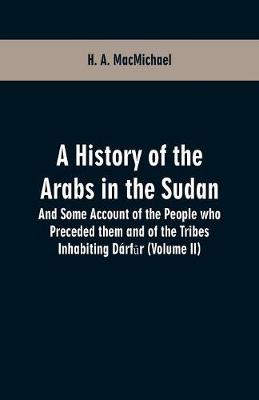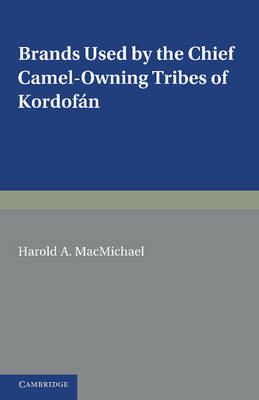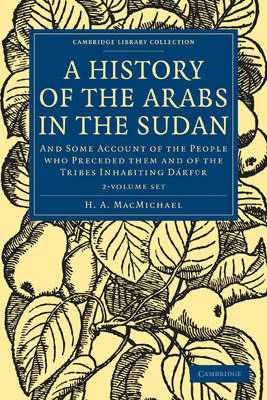Cambridge Library Collection - African Studies
1 primary work • 5 total works
Volume 1
H. A. MacMichael was a member of the Anglo-Egyptian Sudan government between 1905 and 1933. This two-volume work, first published in 1922, is the culmination of almost twenty years' ethnological research conducted while MacMichael was stationed in various parts of Sudan. It provides detailed histories of the origins, movements and degrees of relation between indigenous groups in Sudan, based on oral histories gained from interviews with local people, and on Sudanese genealogical records known as 'nisbas'. These records provide a valuable insight into the construction and fluidity of ethnic identity at a local and regional level, and have been widely used as a basis for subsequent investigations concerning identity in Sudan. Volume 1 discusses pre-Islamic and contemporary indigenous groups. This book contains opinions on ethnicity which were acceptable at the time it was first published.
Brands Used by the Chief Camel-owning Tribes of Kordofán
by H. A. MacMichael
Published 9 October 2007
Originally published in 1913 as a supplement to The Tribes of Northern and Central Kordofán, this volume provides a study of the brands used by camel owners in the Kordofán region of central Sudan. Part one of the text contains the names of brands arranged in alphabetical order, with a note in each case of the tribal sections which most commonly use the brand as their distinctive mark. Part two contains a list of the chief camel-owning tribes of Kordofán and the desert lying between it and Dongola, naming, where possible, the different brands used by each section or subsection. The text is illustrated with examples of brands as they would appear on camels. This book will be of value to anyone with an interest in Sudanese culture and the development of anthropology.
A History of the Arabs in the Sudan 2 Volume Paperback Set
by H. A. MacMichael
Published 17 March 2011
H. A. MacMichael was a member of the Anglo-Egyptian Sudan government between 1905 and 1933. This ethnographic work first published in 1922 is the culmination of almost twenty years' ethnological research conducted while H. A MacMichael was stationed in various parts of Sudan. This ethnography provides detailed histories of the origins, movements and degrees of relation between indigenous groups in Sudan based on oral histories gained from interviews with local people and Sudanese genealogical records known as 'nisbas'. These records provide a valuable insight into the construction and fluidity of ethnic identity at a local and regional level and have been widely used as a base for subsequent investigations concerning identity in Sudan.
H. A. MacMichael was a member of the Anglo-Egyptian Sudan government between 1905 and 1933. This two-volume work, first published in 1922, is the culmination of almost twenty years' ethnological research conducted while MacMichael was stationed in various parts of Sudan. It provides detailed histories of the origins, movements and degrees of relation between indigenous groups in Sudan, based on oral histories gained from interviews with local people, and on Sudanese genealogical records known as 'nisbas'. These records provide a valuable insight into the construction and fluidity of ethnic identity at a local and regional level, and have been widely used as a basis for subsequent investigations concerning identity in Sudan. Volume 1 discusses pre-Islamic and contemporary indigenous groups. This book contains opinions on ethnicity which were acceptable at the time it was first published.
H. A. MacMichael was a member of the Anglo-Egyptian Sudan government between 1905 and 1933. This two-volume work, first published in 1922, is the culmination of almost twenty years' ethnological research conducted while MacMichael was stationed in various parts of Sudan. This ethnography provides detailed histories of the origins, movements and degrees of relation between indigenous groups in Sudan based on oral histories gained from interviews with local people, and on Sudanese genealogical records known as 'nisbas'. These records provide a valuable insight into the construction and fluidity of ethnic identity at a local and regional level, and have been widely used as a basis for subsequent investigations concerning identity in Sudan. Volume 2 contains translations of nisbas with an analysis of their relation to ethnic identities. This book contains opinions on ethnicity which were acceptable at the time it was first published.



